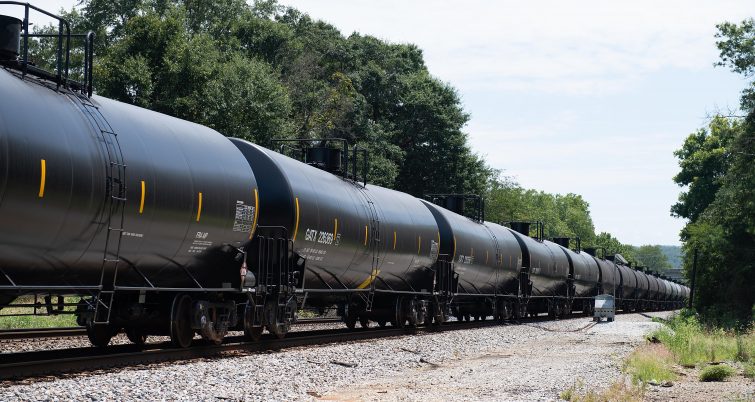Speed limits for crude oil trains increased by Transport Canada
Written by David C. Lester, Editor-in-Chief
Freightwaves is reporting that government speed restrictions on crude oil trains, imposed on Feb. 16 after a Canadian Pacific train carrying crude oil derailed on February 6, will be lifted on April 1. According to the report, the speed restrictions apply only to trains carrying “dangerous goods,” which are defined as crude oil, liquefied petroleum gas, gasoline and ethanol.
The speed restrictions imposed on Feb. 16 were simply that any trains composed of 20 or more cars of hazardous material had a speed limit of 20 mph in metro areas and 35 mph at all other places.
Transport Canada’s degree of modification of speed restrictions is based on the precise nature of the train carrying hazardous materials. For example, a unit train composed of tank cars that are all carrying the same hazardous material to the same location (referred to as a higher risk key train) can travel up to 25 mph if there are no track signals present. This rule also applies to merchandise trains that are carrying 80 or more tank cars loaded with hazardous material, all moving to the same location. The revised rules also say that the trains described above are limited to 35 mph while traveling in metropolitan areas, or 25 mph in areas without signals.
Under the new rules, a train carrying hazardous material is called “key trains” by Transport Canada. These are defined as trains carrying one or more cars of toxic-by-inhalation gas, or 20 or more cars of hazardous materials. These trains can travel up to 35 mph in metro areas and 40 mph at all other places. The difference between a “higher risk key train” and a “key train” is that a higher risk key train is a unit train, where as a key train is not.
Transport Canada said “Transport Canada officials have worked diligently with large railway companies to further assess the causes of recent derailments, and to develop plans to address the areas of greatest concern. As a result of this work, new measures are being implemented effective immediately to reduce the speed of the higher risk key trains traveling through areas of greatest concern.”
For the latest railroad news, please visit rtands.com.





